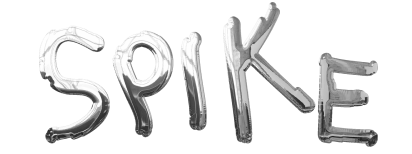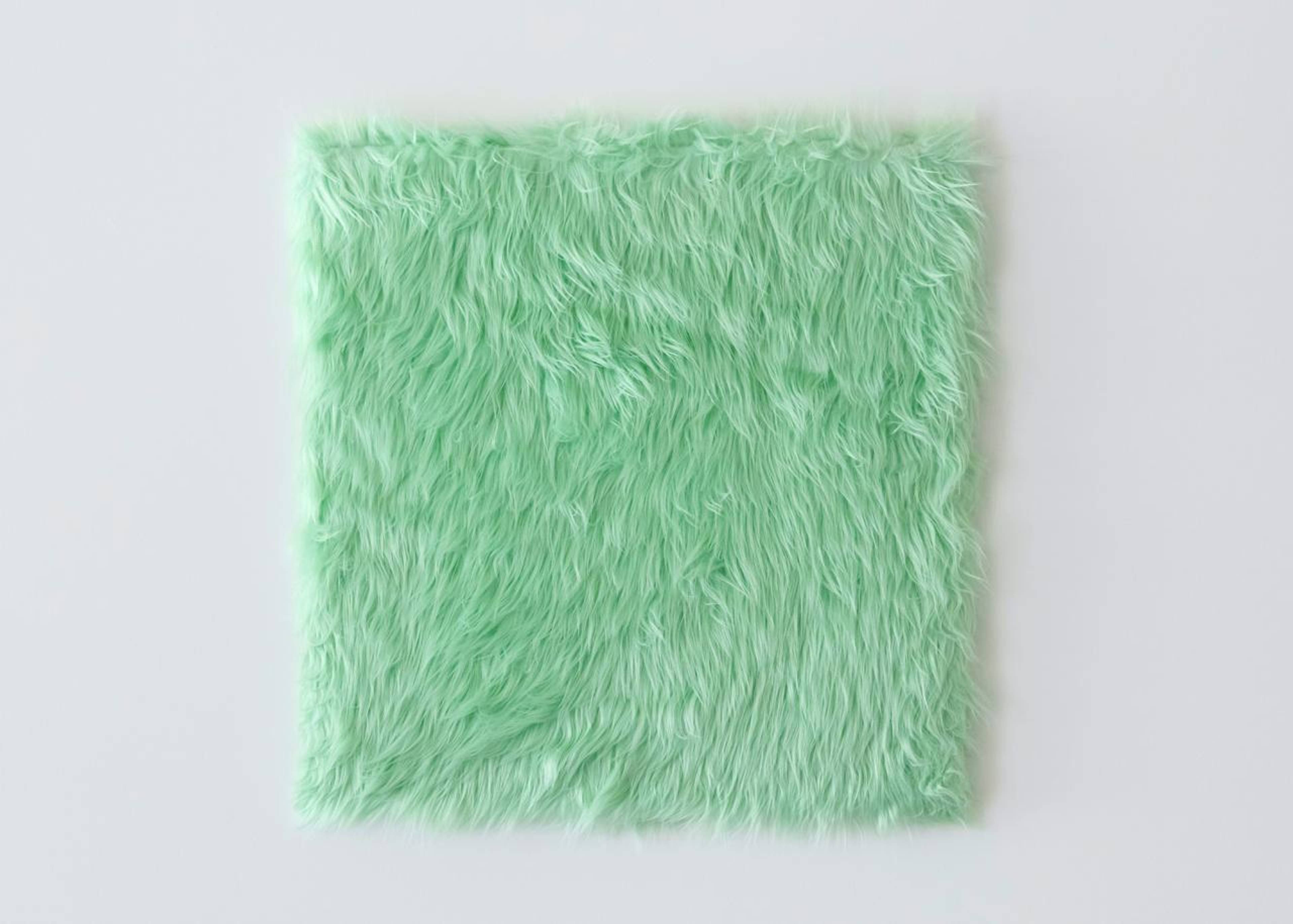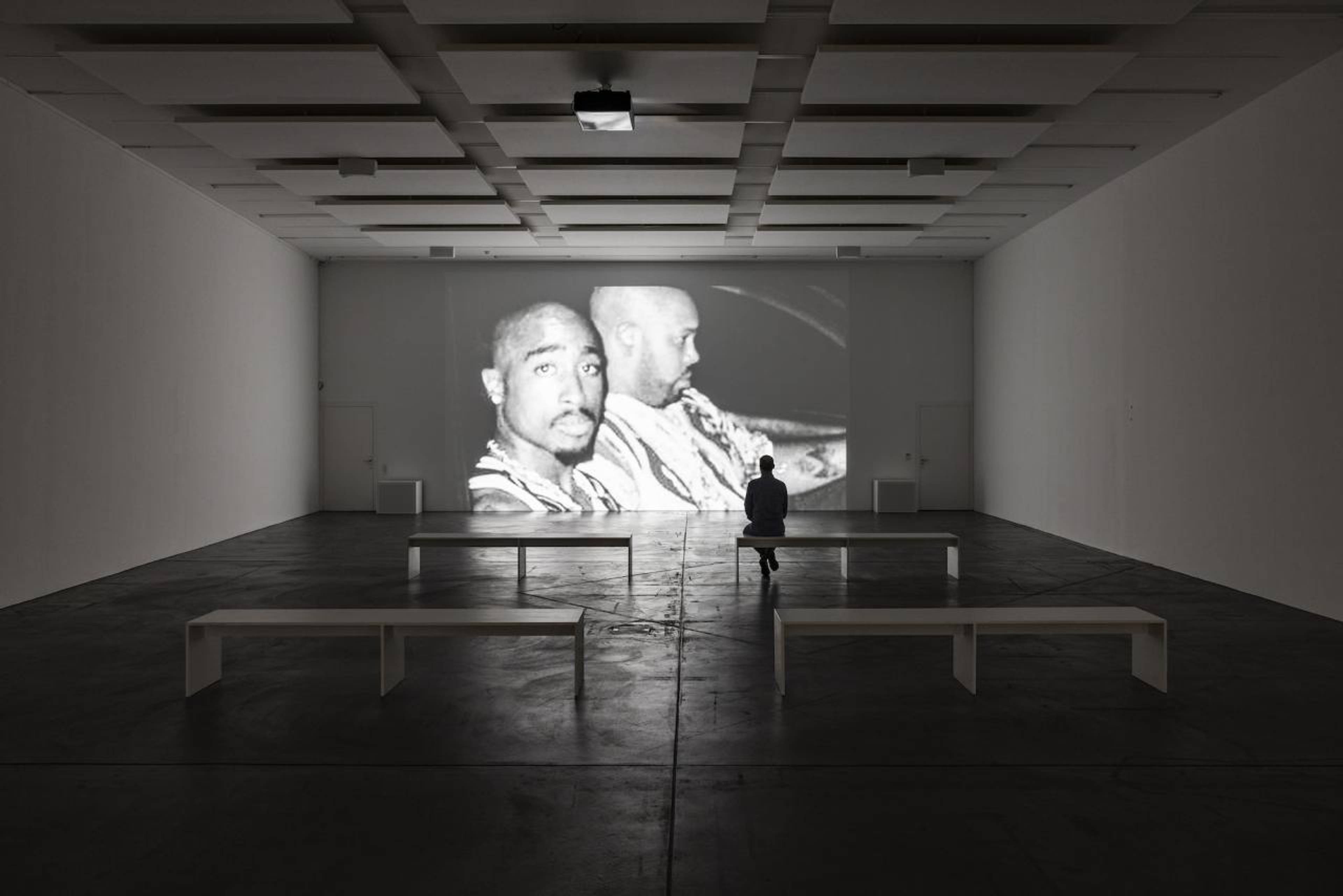As a teenager, Elias Canetti called Zurich a paradise. “It was pleasant to feel safe and not always be challenged.” “And I’m supposed to watch you creep away into nothing!” fulminated his mother, committed to drag her son away from a place she deemed “cut off from the world.” “I’m going to take you to the inflation in Germany.”
Zurich’s Art Weekend this year has been less desolate, or unreal, than Canetti’s mother would feel, as a handful of new exhibitions proved that the city isn’t nothing – it has ties with the world that may challenge, low inflation notwithstanding. And they pulled this off by way of dallying with either the idea of art as aura or art as a brand, or rather as semiotic contamination.
Heike-Karin Föll, other criteria 10 , 2020–23, oil on canvas, 18 x 24 cm
What makes a painting a painting in our media-consumed today? Berlin-based Heike-Karin Föll (*1967) keeps on giving new answers to a question that has haunted her for more than a decade. On view at Weiss Falk gallery, “over-painting” begins with a series of small canvases, paperback sized, along the walls of the first two rooms, hung at eye level. If not paperback, the format might echo the size of a tablet. “Gestures of swiping and scrolling taken from the iPad deny the line’s autonomy; it dissolves into something that is no longer just a line,” said Föll.
The brushstrokes seem impressionistic at times, garden-like. Pure, bright colors juxtapose (rather than mix) into flickering blossoms baked by the sun (other criteria 15 , 2020–23) or reflect in some Giverny water (other criteria 20 , 2020–23). Other times the marks are sparse, minimal, nervous ( other criteria 16 , 2020–23). Elsewhere, there are no brushstrokes at all, but an appropriated Kellogg’s cereal box (n° 11 unicorn froot loops (Paraphrase als Form) , 2020–23) or an advertisement for a printer promising to “exceed your vision” (n° 15 exceed your vision , 2020–23). The name “Heike-Karin Föll” is stamped onto some canvases, “the author as brand as signature as mark among other types of marks,” writes John Kelsey in the text accompanying the show. This, then, might be a painting these days: a jardin of signs, of trademarks, distracted and defined by all others, disseminated, transient, impure.
Heike-Karin Föll, n° 11 unicorn froot loops (Paraphrase als Form), 2020–23, mixed media, 30 x 22 x 2.5 cm
It may be true for video as well. At Luma Westbau, Arthur Jafa (*1960) confronts viewers with 841 images that feel more like late night TV than social media scrolling (the artist stretched his 2013 gem APEX from 8 minutes 22 seconds to now 33 minutes, SloPEX , 2022): a photograph of the pulverized back of “Whipped Peter,” a former slave deformed by torture; macroscopical close-ups of beetles; Micky Mouse; the severed head of a young black woman, held by the hair; Tupac papped in a car – only to mention five. In Jafa’s case, the contiguity of signs creates a dissonance that doesn’t turn into a Giverny, rather a slasher movie in slow, pop mo. “There is no blackness without the horror,” said the artist. “And you have to face it.”
View of “Arthur Jafa: SloPEX,” Luma Westbau, Zurich, 2023. Photo: Nelly Rodriguez
What happens if the constellation “among other marks” covers all with glam, if what you have to face is art’s flirt with commerce? “It’s good I have a thing for auras,” replied Swiss artist Sylvie Fleury (*1961) last summer. “I find it fascinating to see how changing the context adds a dimension to the aura of objects.” At Karma International, she placed, on Sol LeWitt’s (-like) open cubes, a stack of Vogue copies, a baby blue sweater, two lipsticks, and a can of hairspray (“Modern Living” series, 2023). They would be perfect racks for a coquette’s messy room, if it weren’t for a copy of Arthur Danto’s The Abuse of Beauty (2002) hidden among the flighty whatnots, denouncing the taboo we should not have against aesthetics. Fleury dropped fake eyelashes on a Carl Andre’s (-like) steel floor piece (Medium Soft Glow , 2023), and had women with stilettos walk on them (Walking on Carl Andre , 1997). And car paint is in almost every one of her works, backing up her obsession with motors and vamps she has fed throughout her career – in 1991, for her first group show “No Man’s Time” at Nice’s Villa Arson, the artist arrived on a Caprice Classic, in Alaïa Tati garments, gloves and glasses, she parked, opened the trunk, took out artworks disguised as shopping bags and installed them in the villa; in Drastic Makeup (2007), she crushed makeup scattered on the floor with a Buick Skylark.
Since the late 1980s, Fleury has tried to undermine what makes us call an object superficial and what bends it to the point it becomes sublime to our eyes, critical, instead. When does it stay a commodity, purely? When it’s impure to such an extent you cannot call it art anymore? A gadget?
View of “Sylvie Fleury: Frankie Goes to Hollywood,” Karma International, Zurich, 2023. Photo: Annik Wetter
The current show at Sgomento Zurigo seems to dare some answers. For “A Manual of Errors?”, curator Francesco Tenaglia and artist Matteo Pomati (who co-run the project space) invited nine artists to conceive and exhibit not an artwork, exactly, but a sticker. You may recognize some distinguishing attributes: Kasper Bosmans’s (*1990) heraldic forms; Megan Francis Sullivan’s (*1975) jackets; Mitchell Anderson’s (*1985) use of red, his soft spot for appropriation and for nations’ storytellings (here, he inverted the colors of the Red Cross logo, turning it into a Switzerland’s flag). But overall the feeling is of some playful dissent, a negation of both trademark and the sublime – we barely spot the artist’s signatures, we barely spot the art in the room. Recognition maybe, may not be useful, reminds Louise Lawler. And the fact that the show opened one week before Art Basel is possibly not a coincidence. Cassidy Toner’s (*1992) sticker sticks out. She reproduced (half of) a comic strip by Ad Reinhardt who, notably before turning into one of the most revered abstract painters in America, made a living by drawing cartoons. The one Toner picked comes from the well-known “How to Look” (1946) series of art-historical, satirical lessons. “What does this represent?” asks a swanky cowboy-hatted viewer pointing the finger at a Cubist painting; the other half we don’t see at Sgomento is the anthropomorphized canvas shouting back, “What do you represent?” Well, both answers are still to be found in a manual we may call of errors, and other marks.
View of “A Manual of Errors?”, Sgomento Zurigo, Zurich, 2023
___
Zurich Art Weekend 2023
9 – 11 Jun 2023
“Heike-Karin Föll: over-painting”
Weiss Falk, Zurich
3 Jun – 15 Jul 2023
”Arthur Jafa: SloPEX”
Luma Westbau, Zurich
9 Jun – 17 Sep 2023
“Sylvie Fleury: Frankie Goes to Hollywood”
Karma International, Zurich
9 Jun – 15 Jul 2023
”A Manual of Errors?”
Sgomento Zurigo, Zurich
1 Jun – 1 Aug 2023







